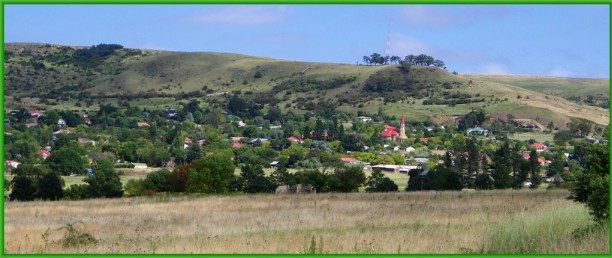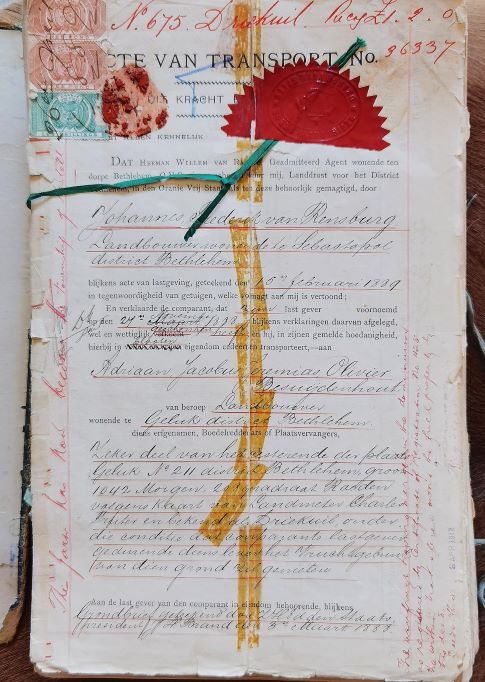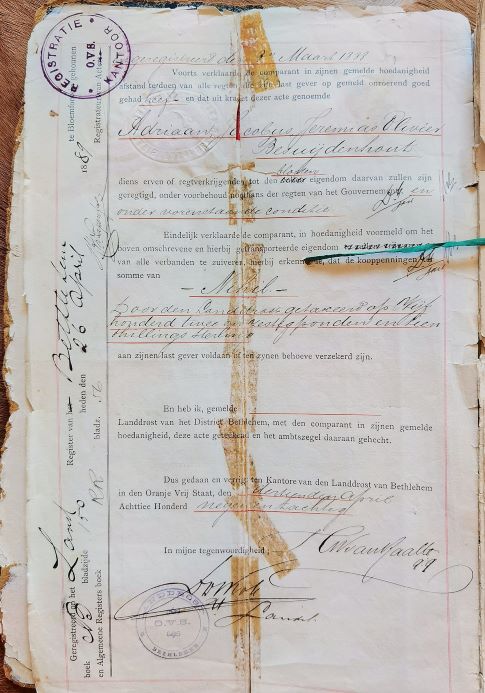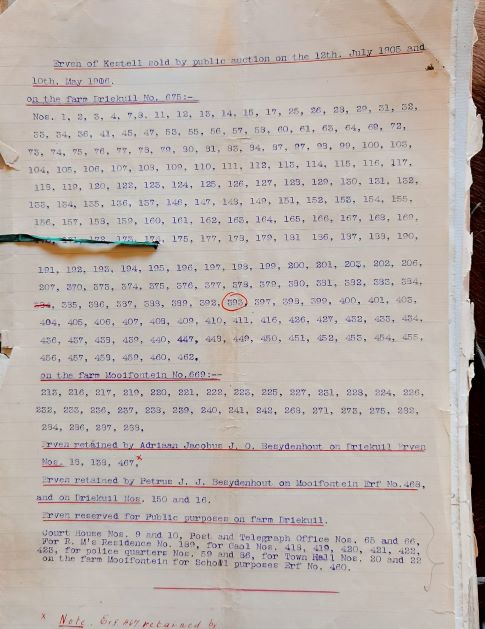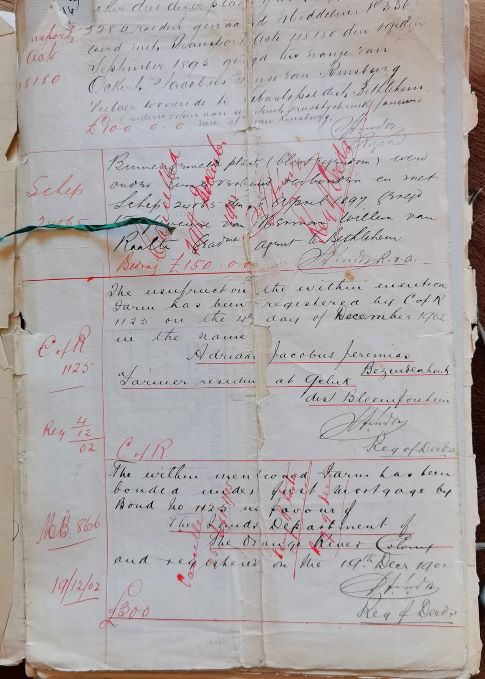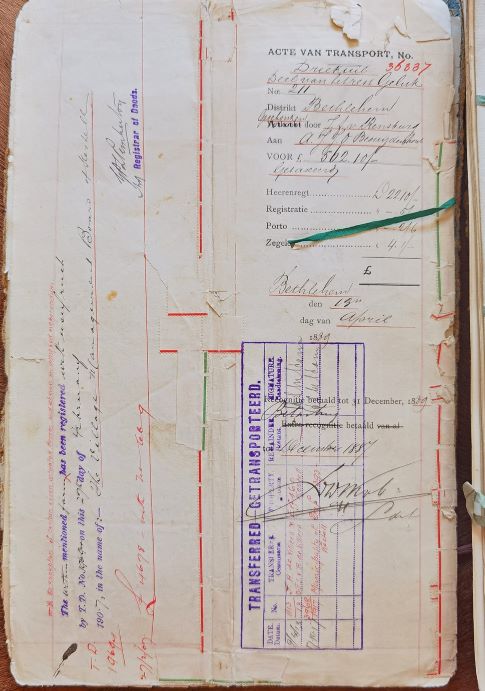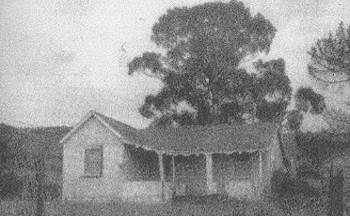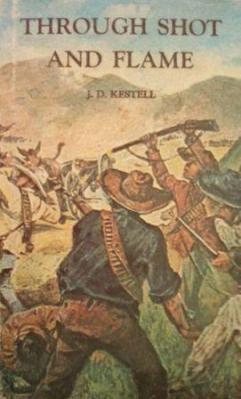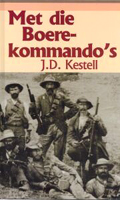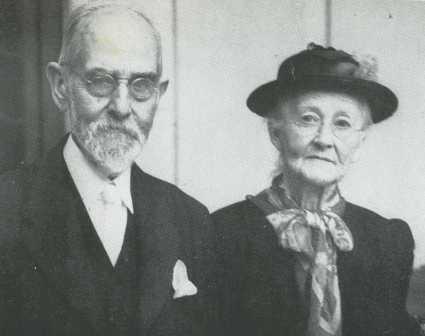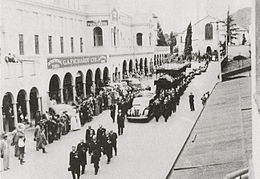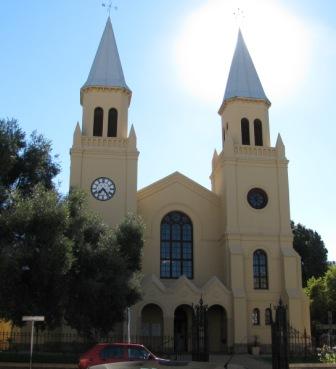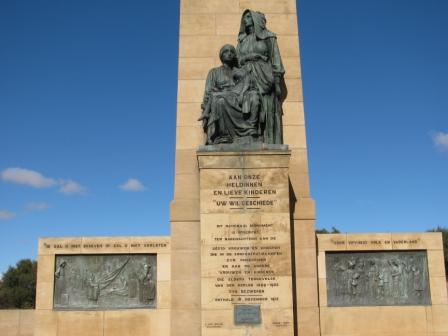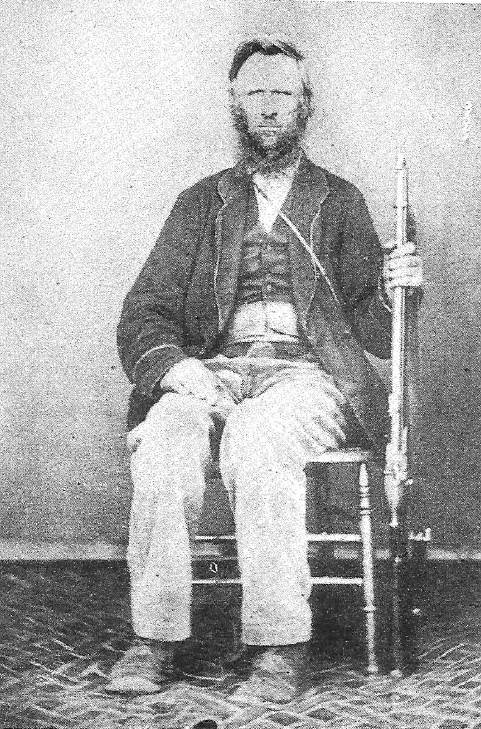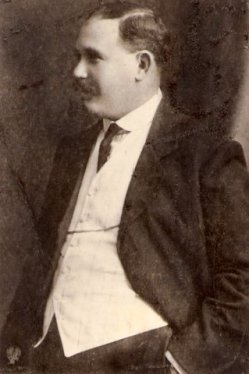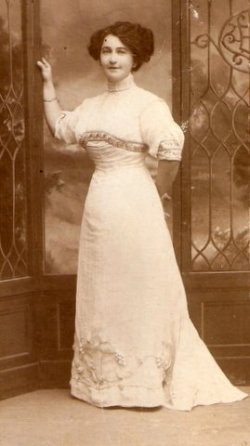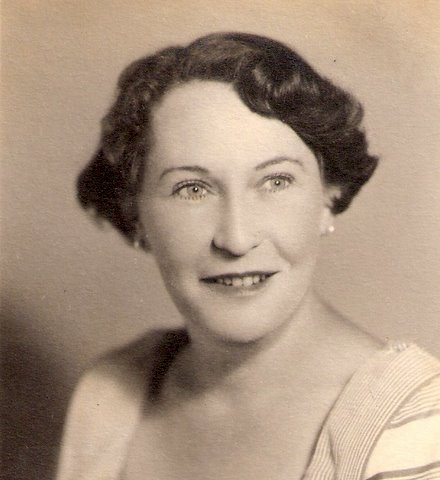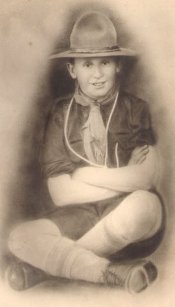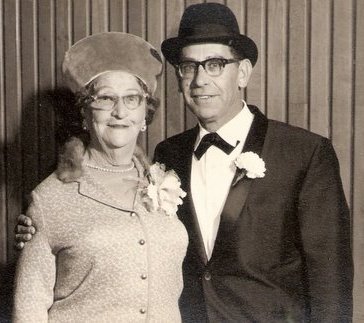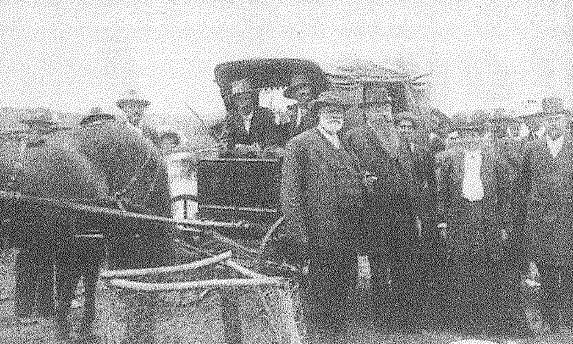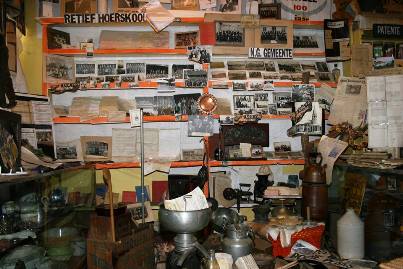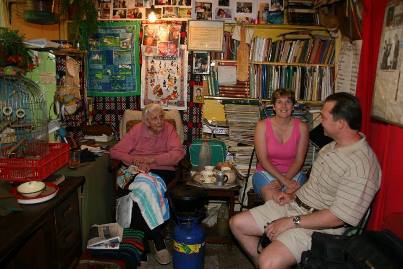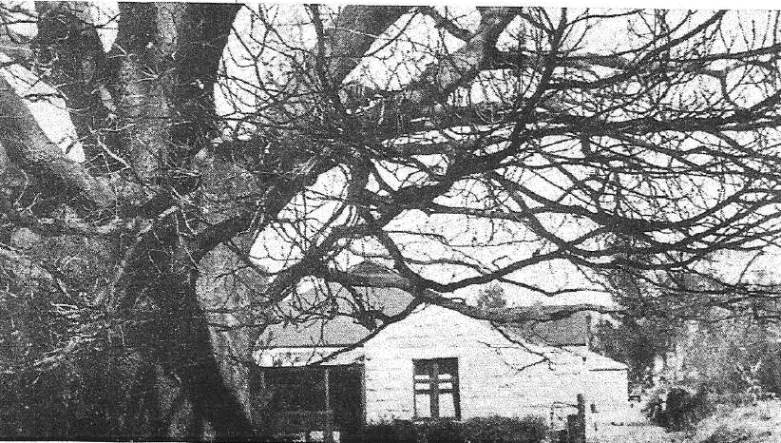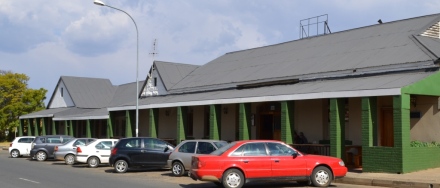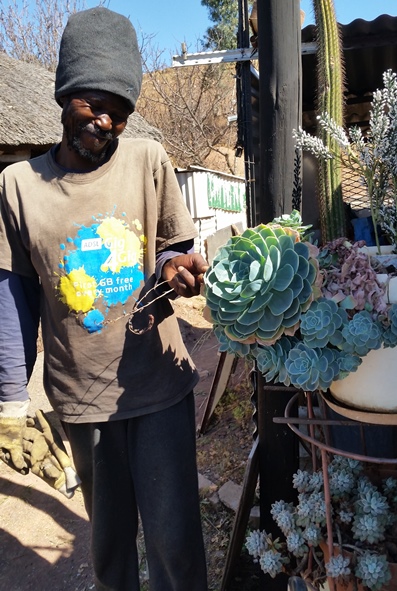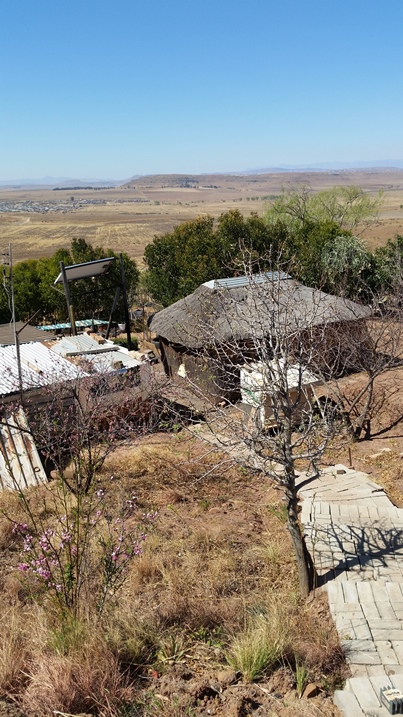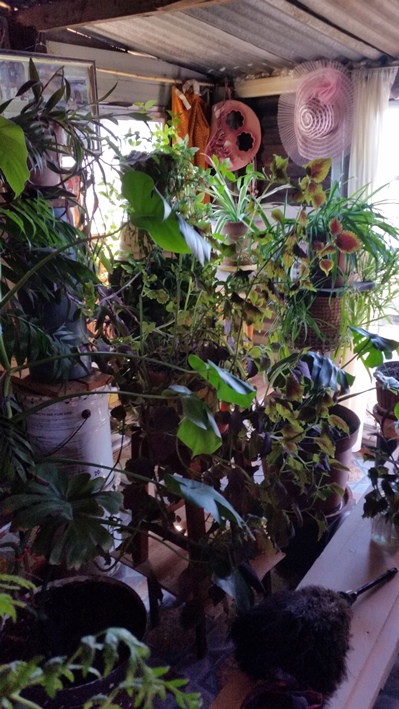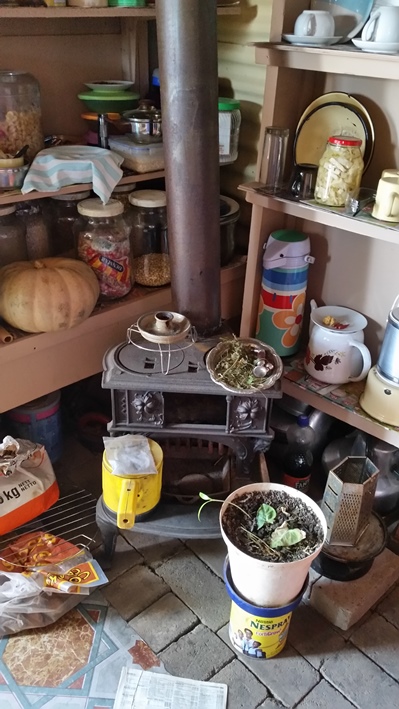Kestell - South Africa

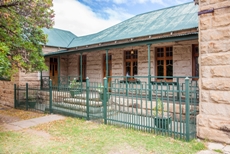
| Many of the homes in the village date back to the early 1900s and several are declared historical sites (photos by Elaine Potgieter & Colin Redmayne-Smith) |
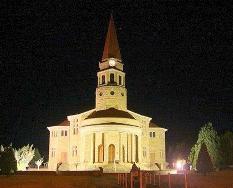
| The NG Kerk at night (photo by Dean Foster) |

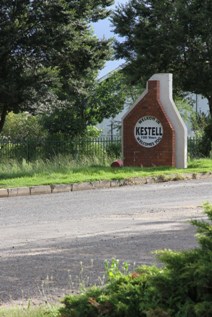
|
The NG Church & Kestell Centenery (Photos by Jeremy Glyn) |
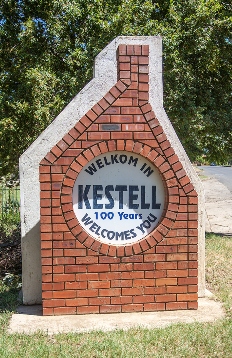
|
Kestell Centenery (Photo by Colin Redmayne-Smith) |

|
Reverend JD Kestell after whom the town was named |
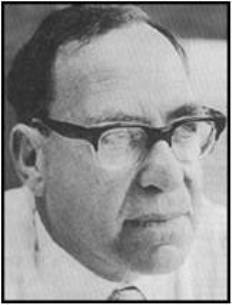
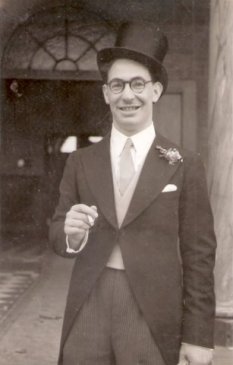
|
Colin Legum, famour writer and political activist was born in Kestell in 1919 Sincere thanks to John Kaplan (son of Doreen Legum) for these photos from their family albums |

|
The Church celebrated its 85th Birthday in March 2013 Photo by Hannes Malan |
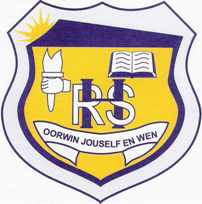
Kestell also played a part in South Africa's history .... |
|
We would love to hear from you If you have old photos or stories to add to the history page. History of the area
photo of the village of Kestell by Horst Müller - 2013
By 1800 the area north of the Orange River was already known to farmers, travelers, and runaway slaves who had gone there to live. Some of these early travelers would return to the Cape Colony with stories about the areas they had found. In 1834 the emigrant Boers began their first plans to leave the Cape Colony. The first Voortrekkers traveled through what we today call the Orange Free State and headed across the Vaal River. Another group of Voortrekkers set off for the northern Free State. In 1837 Piet Retief and Gert Maritz trekked eastwards. Retief's route passed near to the present-day main road linking Bethlehem (then known as Liebenbergsvlei), Kestell and the district that is now known as Harrismith followig the Sandspruit. On the Farm Blydskap near a spring there is a rock with the letters P.R., V.K., 1837 believed to be presumed carved out by Piet Retief and standing for his name, Vooretrekker-kommandant, 18237.
Retief and Maritz wanted to meet with Dingaan, the King of the Zulus and negotiate for land where the Voortrekkers could settle away from the British rule of the Cape Colony. Both Retief and Maritz were dead within the year but the Voortrekkers persevered and by the end of the decade it would seem that they would have their Republic of Natalia. However it was not to be, Natal was annexed to the British Crown in 1843 without the independence of the republic ever being recognized
When British reinforcements arrived many of the Boers decided to trek back across the Drakensberg to the Transvaal (Gauteng). In 1848 the Orange Free State was annexed by Governor Sir Harry Smith as the Orange River Sovereignty. Bloemfontein, Smithfield and Winburg constituted the Sovereignty. The Boers revolted, and led by Gen W J Pretorius, a short battle ensued against the troops of Sir Harry at Boomplaats. The Boers were defeated and Sir Harry felt that his proclamation was now valid. Another district between the Sand and Vaal rivers was also proclaimed. Sir Harry sent PM Bester to establish a town close to the passes of Natal. Sir Harry wanted to name the town Vrededorp but Bester decided on Harrismith.
About 1500 British settlers came to the town and for the next 60 odd years it was mainly an English speaking town, while the rural areas surrounding it were predominantly Dutch speaking. The rural areas were good for farming as the climate was not too hot in the summer, had good rainfall and the winters were crisp and cold. The entire area thrived particularly as it was on the main route from Natal and the diamond fields in Kimberley. By 1898 it was apparent that a war between Great Britain and the Transvaal was inevitable and the Orange Free State was caught in the middle. The Orange Free State decided to assist the Transvaal and in 1899 all Boers aged 16 to 60 were called up under the leadership of Commandant CJ de Villiers. According to the law of the time all British residents automatically became citizens after three years' residence in the Free State, and were therefore eligible to be called up for military service! Many were opposed to fighting against Britain and chose to leave the country, but significant numbers joined the Boer forces. Intense clashes were to follow. From 1899 to 1901 some of the fiercest battles of the Anglo Boer war took place in the Harrismith area.
“Four days of incessant skirmishing, which cost 18 casualties brought the force from Harrismith to Bethlehem. Using Maj Gen B B D Campbell's 16th Brigade and the garrison at Bethlehem (all told 2 200 infantry with 8 guns and 500 Yeomanry), Rundle left Bethlehem on 29 April and entered Retief's Nek the same evening. Fouriesburg was reached three days later. En route a quantity of Boer supplies was destroyed. The operations within the basin lasted until the end of May. In early June, Rundle's force, having destroyed all that could be located, evacuated Fouriesburg and headed eastward towards the Rooiberge. Campbell's men and the 17th Brigade under Col G E Harley proceeded eastward, the former group issuing from the mountains at Witsieshoek, the other via Golden Gate, both converging towards Elands River Drift where they united on 8 June. Their joint booty amounted to 6 000 head of cattle, 41 vehicles, ammunition and 320 tons of foodstuffs. The British casualties amounted to 12 killed and wounded.” S A Military History Society
The Anglo-Boer War officially ended shortly after 23:00 on 31 May 1902 in Pretoria with the signing of the Treaty of Peace by both sides. Rev JD Kestell would later write about the signing of the peace treaty: "The Peace Negotiations between the Governments of the South African Republic and the Orange Free State, and the Representatives of the British Government, which terminated in the peace concluded at Vereeniging on the 31st May 1902", by JD Kestell and DE van Velden. It was later translated into Afrikaans by JF le Roux and DJ van Zyl.
Discussions about proclaiming a town halfway between Bethlehem and Harrismith had started in 1899 at a meeting held on the farm Mooiplaas but had been postponed during the war. After the war local farmers met again on the farm Tweefontein, and again in 1904 on the farm Helena when they decided to push ahead with the plan. At a later meeting on the farm Blydschap a commission was formed to take the matter further. But as is often the case they could not reach agreement as to where exactly the town should be. Three farms were in the running, Driekuil, Mooimeisjesrust and Solferino. Eventually they reached agreement on the farm Driekuil. A committee from Bloemfontein gave authorisation to go ahead but the town planning committee discovered that Driekuil was too small so an offer was made for the adjacent farm Mooifontein, both owned by the Bezuidenhout family. Each brother, Adriaan and Johannes, retained a small portion of the original farms for themselves, today known as Hillside and de Dennen. It was Adriaan Bezuidenhout's wife, Sannie, that suggested the town be named after JD Kestell.
The town of Kestell is named after the Reverend JD Kestell. Kestell was a descendant from 1820 settler stock, and was born in Pietermaritzburg. After completing his studies in Stellenbosch he took up several posts until in 1893, he came to the Harrismith district. Dr Kestell was the minister of the N G Congregation at Harrismith. Kestell was then part of his congregation. In 1905 it became an own congregation. By 1900 the Boer War had started, and Kestell served with the Harrismith Commando as a chaplain for men serving with the various volunteer corps. Many were foreign nationals and their own churches were discouraged from offering services to them by their home governments' policies of neutrality and the vigilance of the British who ensured that this prohibition was not broken. Similarly, those Boers who changed sides and joined the National Scouts also found themselves without the support of their churches.
In January 1900 JD Kestell again found himself in the middle of a fierce battle during General Botha’s Spioenkop Campaign. On the Sunday morning of 21st January, General Warren resumed the attack on the Boers with heavy artillery support. Botha's burghers were beginning to show signs of wavering as more shells hit the entrenchments, killing and maiming many of them. Kestell would later write about this day in his memoirs.
"I visited the battlefield when the bombardment was at its fiercest", wrote Kestell. "I found that it had often been so intolerable that the burghers were driven out of the earthworks and compelled to seek shelter behind the hill slopes. But they had always returned and kept up a continuous fire on the advancing soldiers. The direction of affairs was, however, in the hands of General Louis Botha, than whom there was no man better qualified to encourage the burghers. Just as at Colenso, so here he rode from position to position, and whenever burghers - as I have related - were losing heart and on the point of giving way under the awful bombardment, he would appear as if from nowhere and contrive to get them back into the positions by 'gentle persuasion', as he expressed it, or by other means." By the 25th of January the British had abandoned Spioenkop and 650 lay dead with many more wounded still lying on the battlefield. The Boer casualties were 59 killed in action, nine died of wounds and 134 wounded.”
Some months later the Groenkop Battle took place on the 24th and 25th December 1901 when General Christiaan de Wet led an attack on General Rundle's Yeomanry. The Groenkop Battle site is only 20 kms southeast of the village of Kestell.
JD
Kestell's influence on the history of South Africa extended
far beyond the little village of Kestell. In 1902 he
sailed with General Christian de Wet to Europe where they
were to raise funds for the widows and orphans that were left
impoverished by the war. During the long trip he helped
De Wet to write his memoirs of the war "De Strijd Tusschen
Boer en Brit". The book would become a best seller
and was translated into six languages. Kestell and De
Wet would be life long friends.
"Die Vader van die Volk" as he would come to be known passed away on the 9th of February 1941 and was buried at the Vrouemonument in Bloenfontein. His funeral service was held at the "Tweetoringkerk" and he was laid to rest next to President Steyn, General de Wet and the ashes of Emily Hobhouse. In 2000 a stamp was issued in his honour
Tweetoring Kerk & Vrouemonument - photos by Ina Cochrane
Kestell Celebrates it's 110th Birthday in June 2015 The village of Kestell was founded in 1905 on the farms of Mooifontein and Driekuil. A Mr. JFJ van Rensburg was the original owner of the land. He had two daughters that married the brothers Hans and Adriaan Bezuidenhout. When he passed away the land was divided into two portions, one for each daughter. The main street of Kestell is named after him. Some of the homes in the village are even older and date back as far as 1806.
Mr. J.F.J. van Rensburg
The Legum Family Louis and Jane Legum, Lithuanian Jewish immigrants, were the owners of the Mont-aux-Sources Hotel (now the Kestell Hotel) in Kestell, Free State, South Africa during the early 1900’s. They had five children. The eldest daughter Ettie, a son Abe, then Colin, another daughter Doreen and then the youngest son Jackie, who sadly died when he was about 13 years old. Louis passed away at a young age, in the 1930s, and Jane continued to run the hotel for a few years before moving to Johannesburg, and then on to Bloemfontein where Ettie and Abe had also settled. She finally settled in Israel where Doreen was living, and passed away in the mid 1970s.
Louis & Jane Legum
Ettie Doreen Jacky
Abe, photograped with his mother Jane
at the Kestell Hotel Colin Legum was born in the hotel on 3 January 1919. He was educated at Retief High School, and was an avid reader even though he grew up in a home without books or newspapers. A clever child, he performed well at school and was ranked seventh in the country when he wrote his matric exams. As soon as he finished school in 1934 he moved to Johannesburg where he found a job as an “office boy” at the Sunday Express. He was only fifteen, and by the time he turned nineteen he was the newspaper’s political correspondent. Colin Legum had firm convictions formed by his youth in Kestell. He felt concerned about the injustice of the treatment of the local black population, and worried terribly about the plight of poor white children in the community, who often went barefoot even in the coldest of winter weather. He was a socialist but strongly anti-communist, a staunch Zionist and defender of Israel. He soon entered politics and in 1942 was elected a member for the Labour Party on Johannesburg’s City Council. In addition he served as the General Secretary of the Labour Party, and became Chairman of the Special Housing Committee. In 1941 he married Eugenie Maud Leon and they had one son, David, who died in Israel in 1994. When the National Party won the elections in 1948 and began to conceive and introduce apartheid, Colin and Eugenie decided to move to London. Here he would become a legendary Fleet Street journalist with thirty years service as The Sunday Observer’s Diplomatic & Commonwealth correspondent. Eugenie died in 1953. In July 1960, Colin was remarried, to the well-known South African economist Margaret Jean Roberts in London. They had three daughters. In 1964, Colin and Margaret published South Africa: Crisis for the West, an influential book arguing for sanctions to bring down apartheid. He was prolific writer and was author, co-author, or contributor of many books. His last book, Africa since Independence (1999), was based on lectures delivered at Indiana University. Other achievements include convincing leading Africanists in 1968 to contribute to the 23 volumes of the Africa Contemporary Record. He also edited the Middle East Survey and from 1982, Third World Report. Legum and his wife had been banned from South Africa in 1962, but with the ending of apartheid were able to return in 1990. They settled in Kalk Bay, near Cape Town. Colin Legum received honorary degrees from Rhodes University and the University of South Africa. In 2002, he started a development trust to provide scholarships at Retief School and was particularly pleased that his old school invited him back to preside over the annual prize giving awards. He continued to work as journalist, author, and visiting lecturer until his death from cancer at 84 years old, in Cape Town on 8 June 2003. His wife Margaret died in Cape Town in November 2007, after surgery for cancer. She was survived by her three daughters, eight grandchildren and two great-grandchildren.
Such was the importance of this church that President Steyn and his wife attended the opening of the "pastorie" in Nomember 1907
The
Church celebrated its 85th birthday on the 31st March 2013.
The Church had opened its doors in the beautiful sandstone
building in 1928. Before that the services had been
held in a 'sink" (corrugated iron) shop. During
the Boer War Reverend JD Kestell had even been forced to hold
services in trenches!
View
of the Church at night
The
Retief Boekwinkel turned 76 years old in January 2015. It
first opened its doors to sell school books in 1939 and was
managed by Mrs Rita Ramage. Her son, Johan Ramage remained
involved with the school until his death in 2018. A
well known ecentric in the town, he knew the history of every
building and local family and was often visited by people
wanting to find out more about their ancestors. Sadly he was
murdered in his shop one hight, it is believed for just a
handful of old coins.
Retief Hoerskool 110 Jaar Oud
Die Hoerskool Retief in Kestell is op 12 June 110 jaar 'jonk'. Die skool se verhaal begin in 1838 by die fontein net buite die dorp met sy helder water, en met Piet Retief en sy geselskap wat saam met hom getrek het.
Met hulle aankoms by die fontein het hulle die eerste keer die Blouberg gesien wat soos 'n Duiwelstand en 'n draak le. Die berg word Drakensberg genoem. Hulle het die fontein Blydskap genoem. Retief het daar 'n akkerboom geplant wat 'n groot rol in die skool se geskiedenis speel. Dons de Lange het die kinders uit die Bybel and uit "Trap de Jeug" geleer. Dit was die begin van onderwys on die omgewing.
The
massive old oak tree where both Church Services and School
lessons were given
Nadat die stigters van Kestell die transaksie vir die verkoop van erwe op 12 Julie 1905 afgehandel het, is besluit dat 'n skool geopen moet word. 'n Mev Allen het begin skool hou en teen Januarie 1906 was die goewermentskool amptelik in volle gang. In 1938 is die skool se naam verander na die Hoerskool Piet Retief maat kort daarna het Piet uit die skool se naam verdwyn. Die skool se leuse "Oowin jouself en wen" het uit die gemeenskap se swaarkry onstaan. Gedurende die Boere Oorlog, die Groot Griep en weer met die Groot Droogte het baie mense alles verloor en so het hulle geleer dat niks hulle sal onderkry nie.
In 2015 the local high school was renamed Hoerskool Retief; it had previously been called “Die Goewernmentskool” as was the case with most schools in little towns throughout the country – they were simply known as "the Government school"!
Kestell Hotel - over 110 years old and with a chequered past On the 12th June 1905 the erf on which the Kestell Hotel stands was proclaimed, and was purchased for £63. Although no accurate records exist it is believed that the original building was completed about 2 - 3 years later. This amusing story by Johan Ramage (local historian and owner of the Retief Boekwinkel) tells how on the very first night that the hotel opened it was reduced from a double story building to a single story!
Kaperjolle
bring Skade ... Die dubbelverdieping hotel was net klaar gebou in Kestell en 'n groot inwydingsfees is gereel. Gaste was genooi ... al die kamers was vol bespeak ... behalwe die solderkamer waar die linne en ekstra beddens geberg was. Die eregas was die Goewerneur van die Vrystaat. Almal sou 'n vyf ster ete aangebied word. Hoender pastei en vrugte poeding was daar, en natuurlik het die voggies gevloei. Oom Abraham, wat besondere groot voete gehad het, was een van die gaste wat nie sou oorslaap nie. Hy kon die elmboog goed lig en toe die aand vir hom begin dooierig word het hy begin aksie soek! Die aksie was wel daar in die vorm van Mooi Bettie die dogter van 'n naburige dorp se burgermeester. Gou het hulle mekaar se geselskap geniet, en omdat die voggies al begin praat het, het die twee kort voor lank besluit om die saak verder te voer. Met 'n parafien lamp is die twee solderkamer toe. Gou het die klere gewaai. In die geesdrif van die oomblik het Oom Abraham se nommer twaalf voet ongesiens die lamp omgestamp. Toe die twee asem skep was die solder al goed aan die brand . Die vlamme het gou na die boonste verdieping versprei terwyl die partytjie nog goed op dreef was op die grondvloer. Tyd vir klere gryp was daar nie en die paartjie is poedelnakend by die hotel uit en die straat af! So het die hotel se boonste verdieping daardie aand afgebrand en dit is nooit weer herbou nie.
Japhta on the Hill
From his little 'kingdom' on the hill, Japhta surveys the vista of Tholong and Kestell below him. Everything he has built, and everything he owns, including a very large tabby cat and a woundrous collection of cactus plants, has come from the old old rubbish dump. His only income is from the plastic bottles and recyclable materials he sells to "a man that comes from the town". The old dumping site is closed now and new site was established further down the hill. He keeps a beady eye on the comings and goings so that he can quickly get there to snap up anything usable for his construction projects. When you ask him, he says "life is good" and his only reall worry is the lack of water. In the current drought conditions, the rain water he stores in his tanks does not last the complete dry season. Thankfully "good people from the town" bring him containers of water from time to time. So if you planning a drive up the mountain or a visit to the old site, please think of Japhta and Kat and take along some water and a bit of cat food.
|
